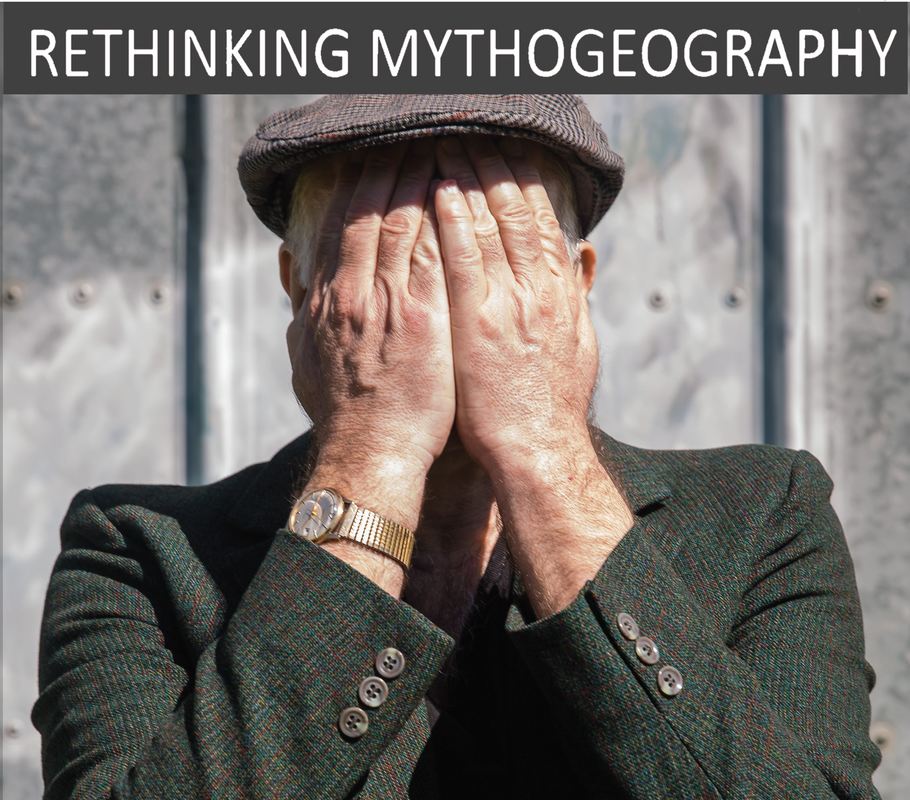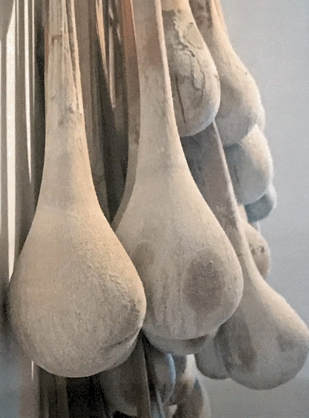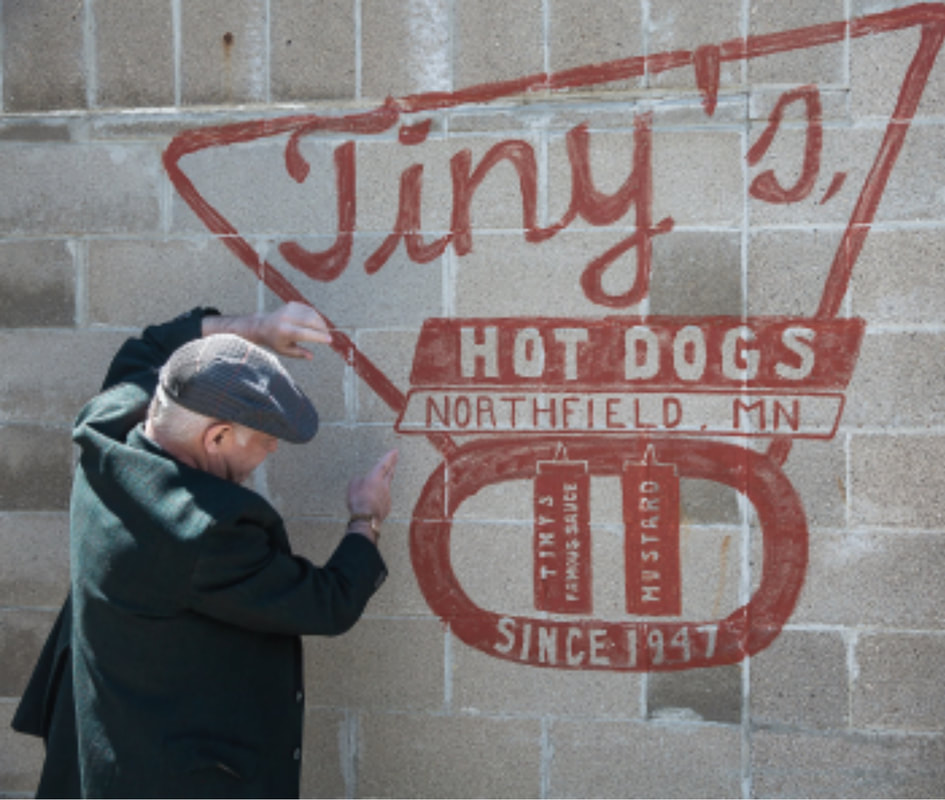Buy the beautiful Paperback @ £20 (there is no ebook)SPECIAL OFFER: Use code mytho at checkout and we'll include a free copy of Phil Smith's 2010 book 'Mythogeography' with your order.
The book is a beautiful thing, printed by Park Lane Press using Waterless litho technology for better quality and minimal environmental impact. So there is no ebook.
US & Canada - buy the book from our US distributors IPG
Imprint: Triarchy Press
Published: 19th March 2018 Format: Paperback ~ Extent: 52pp. ~ Size: 20.3 x 24.1 cm List Price: £20 ~ SPECIAL OFFER: Use code mytho at checkout and we'll include a free copy of Phil Smith's 2010 book 'Mythogeography' with your order. ISBN: 978-1-911193-38-8 Tags: drift, dérive, northfield, wrights & sites, mythogeography, mis-guide, psychogeography, walking, phil smith, john schott Rethinking Mythogeography in Northfield, Minnesota Phil Smith ~ John Schott Readership
Rethinking Mythogeography is a book for walkers, artists who use walking in their art, students who are discovering and studying a world of resistant and aesthetic walking, anyone troubled by official guides to anywhere, psychogeographers, site-specific performers and urban explorers.
Read more: |
My time in Northfield "made me aware of how little of the potential, the urgency or the route of the mythogeographical pilgrimage I have shared with others. I am trying to go a little further here." Phil Smith
ReviewsSince 1998 , Phil Smith's ‘mythogeography’ has developed as a paranoid, exploratory, detective-like approach to space and place. It has prioritised anomalies and ‘in-betweeness’, working in gaps, extolling ‘voids’, and constructing general ideas from the ‘and and and’ of the accumulation and assemblage of disparate parts.
It has also given attention to patterns, assuming such patterns to be an emergent meaning in themselves. Part of that attention to patterns has been a careful attempt to use ‘limited myth’ - myth-like accounts that are capable of symbolically representing patterns (e.g. of power or cultural paradigms) but are rendered questionable by their pop-cultural exploitation, blatant fiction or absurdity. Since 2010, when Phil Smith's book Mythogeography was published, the thinking and practice surrounding psychogeography, mythogeography and radical walking have moved on significantly. This book is a 2018 upgrade - an update for anyone interested in the subject . It consist of an essay by Phil and photographs by John Schott taken during Phil's recent invitation to be Artist-in-Residence at Carleton College, Northfield, Minnesota. Searching for the magic in the everyday? For that moment when we find a heightened understanding of ordinary things? For a way to welcome in enchantment?
Here is one set of keys to that magic: tools for paying close and respectful attention to everything as we walk; ideas and tactics for making deft and intuitive connections to a bigger picture. Invited to be Artist-in-Residence at Carleton College, Northfield, Phil Smith chose to re-examine mythogeography – his remarkable way of walking with heightened awareness – as he explored the town’s suburbs, its utopian grid and magic square, an early silence about the place, and the spectacle of the bungled Jesse James raid of 1876. John Schott followed him with a camera and his images, in turn, inspired the text of this book. In his walking, Phil Smith conjured a “blurting out of things” in Northfield, to fuel a new kind of mythogeography. In this book, he and John Schott demonstrate how we can all do the same. This is a book for anyone who would like to walk that way. |
2 images from a book inspired by John Schott's photography
Reviewed...
“Excellent examples of both practical techniques for engendering these new states of awareness, as well as a deep theoretical exegesis of psychogeography, are to be found in the new work Rethinking Mythogeography… by Phil Smith. Phil is a seasoned traveller in non-ordinary spaces, creating plays and site-specific installations amongst other things. In his new book (which like the one by me and Greg, is replete with evocative photographic images) he explores the town of Northfield in Minnesota, counterpointing it with observations of the hidden histories of locations such as A la Ronde in Devon.
Phil writes beautifully, capturing in his prose the mythic intent and surreal outputs of ‘disrupted walking’.
The magic of the ordinary may at first strike you in flashes or by the sudden falling of a shadow across a scene; but if you can hold onto those moments for a while, stay calm and not grab for the first wonder, then—like the passing freight train—the magic will begin to steam around you in unfolding loops, in strings like movies or stories or chains of DNA.” Read the full review at: https://theblogofbaphomet.com/2018/02/
Phil writes beautifully, capturing in his prose the mythic intent and surreal outputs of ‘disrupted walking’.
The magic of the ordinary may at first strike you in flashes or by the sudden falling of a shadow across a scene; but if you can hold onto those moments for a while, stay calm and not grab for the first wonder, then—like the passing freight train—the magic will begin to steam around you in unfolding loops, in strings like movies or stories or chains of DNA.” Read the full review at: https://theblogofbaphomet.com/2018/02/
16 Key Ideas in the book
|
1. On being touched, but not obliged - how can we fully engage with people and places and yet ensure that there is no surrender of our nomadic slipperiness, no surrender to the grand narratives all around?
2. Pilgrimage - how can we weave the practice of pilgrimage in and out of our daily lives? We need to seek two things: 1) to appreciate the sacredness of the road itself; 2) to find in ourselves the edge of the hidden and unrepresentable part and learn how to protect it. 3. The big picture and the zero - i.e. event horizons. Local history, tourist guides, our own story telling always start from somewhere - everything before that gets deleted. A genesis story generates excessive idealism and energy by denying the things destroyed in order to begin from ‘nothing’. 4. Breadth & Narrowness - the 'narrowness' of everyday lives is often compared to the 'openness' of history. But mythogeographers do not escape from one place to the other; they find and explore them curled up inside each other. Breadth and narrowness are different characteristics of the same places. 5. Individual embodying an idea - let us prefer anonymity and give priority to the ideas, not the personalities that represent them. 6. The mob - "I want people to walk mythogeographically, but under their own steam; not led, not guided by anyone, least of all by me." 7. The compromised body as an agent of joy - let us put our bodies (not ideas) back at the centre of walking and drifting. 8. The “talented” walker ready to pounce - leaving an action until the last moment keeps open the ‘edge of chaos’ for as long as possible. This is not to advocate improvisation, rather to say that by their preparedness and transparency “talented” walkers can illuminate their route. |
9. Dread space - a sufficiently sensitised walker can transform a feeling of sourceless fear into a preparation for an experience or act of liberation.
10. Walking with your imagined self - we can enter our own fancies and fantasies about and in a place, scripting and recording our encounters with objects and empresses as we go. Walking alone is a fine way of learning how to blend hard things with soft imaginings. 11. From classic pilgrimage to ambulant architecture - the next step for everyday pilgrimage is towards ambulant architecture: building new shrines to divert travellers, installing trip hazards, overlaying mazes across the path, building trick-walls and digging trenches and tunnels, taking down signs and planting trees. 12. Ritual and repetition - walk a place repeatedly, turn your body over to it, through repetition make up your own ritual of the place. 13. Using architecture as a magic wand - Find 'new menhirs', touch them, lean against them, hold them as connectors to something or somewhere else, channels to thinking and wands for moving things (but not by broadband). 14. Provisional mythogeography - Allow your careful research or structures or maps or plans to dissolve and unravel in the face of the place's own disorientation. 15. Fighting the Spectacle with the power of zero - look for the 'zero', that infinitesimal change that can disrupt and unravel the forces of the spectacle, deregulation, globalisation and terror. 16. Evangelising - there is no point in a reader who agrees with me; but only in one who is getting mad enough to do this stuff in their own and better ways. If you are; I’m in the wobbly drift-mob by your side. |



